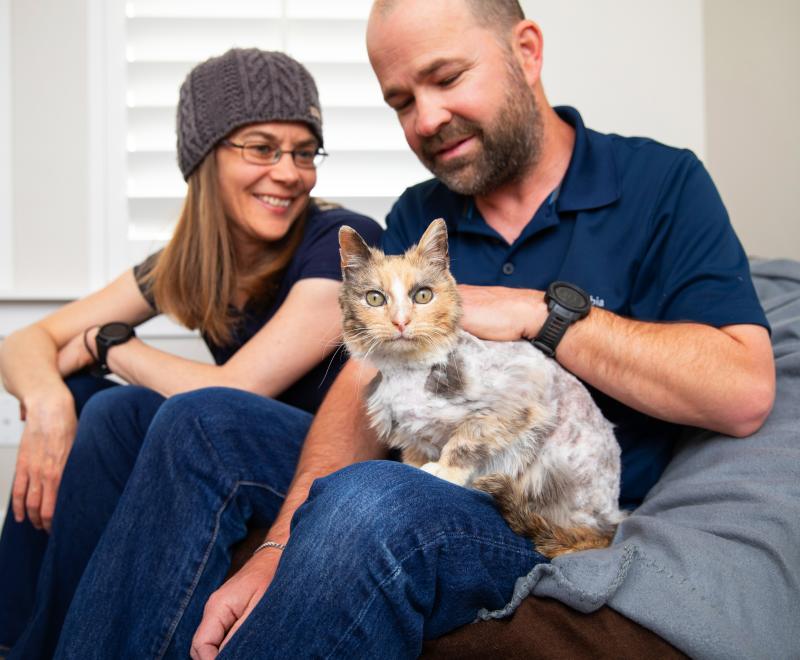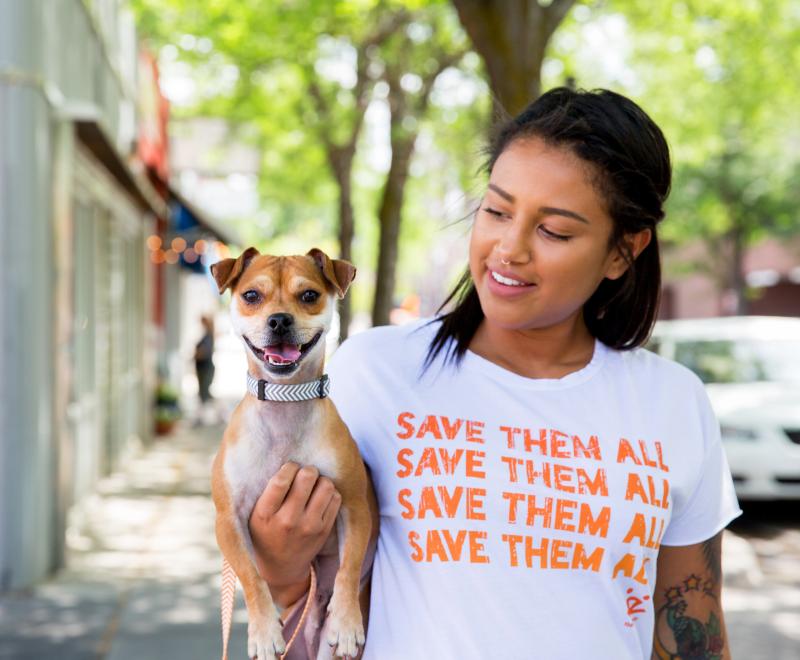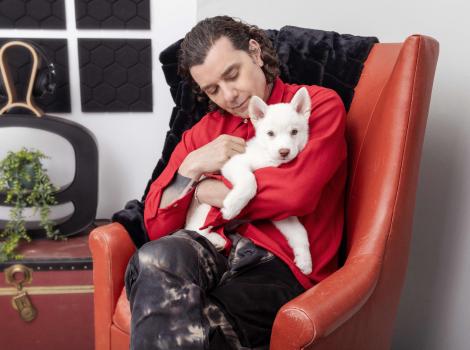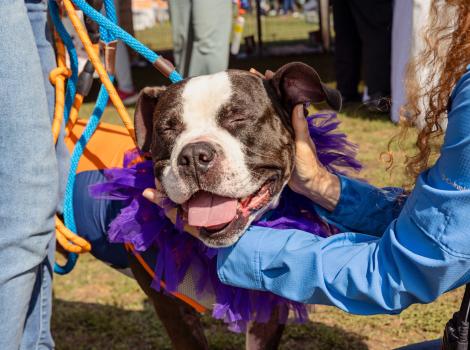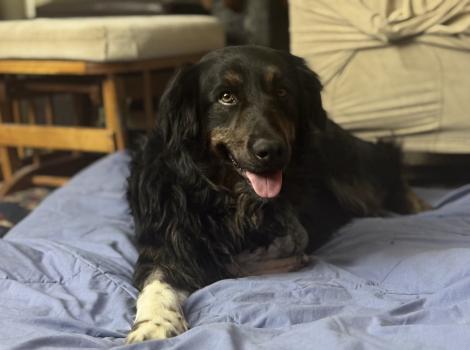Animal shelter saves pets even when the going gets tough

It was just his second month on the job when Justin Serna, the new manager of Marshall Pet Adoption Center (MPAC) in northeast Texas, was in a tough spot.
With two staff positions suddenly vacant, Justin was the shelter’s only full-time employee available for duty. The shelter was over capacity by 340%; the volunteer team was stretched. None of it was sustainable for the animals or the people involved. That’s when Justin reached out for assistance.
“We rallied the troops and sent in three Best Friends employees to assist,” says Sophia Proler, Best Friends South Central regional director. “It was extremely important that we show up for a partner who’s shown a commitment to no-kill and just needed a helping hand.”
Sending in employees to help in times of need and to advise on operational efficiencies is one of the ways Best Friends Animal Society is helping shelters around the country reach no-kill in 2025.

All hands on deck
The three Best Friends employees — regional manager Leah Long and specialists Emily Lancione and Christine Morey — got to work even before traveling to Marshall. They organized an adoption event, which included engaging the Best Friends PR team and handling the social media to get the word out. The event was a success, resulting in 25 adoptions in one day.
“When we arrived in Marshall, the first thing we wanted to do was to take work off Justin’s plate because he was dealing with all the operations on his own,” says Leah. “We put on our boots and worked right alongside the shelter’s service workers and volunteers.”
[Texas animal shelter’s total turnaround]
In addition to routine cleaning and other chores, they met with Friends of Marshall Animals (FOMA), a local nonprofit that does fundraising and manages the shelter’s volunteer and foster programs. And they met with Justin to help review various shelter policies and procedures.
“Working closely with everybody and getting to meet everyone involved at the shelter allowed us to become familiar with their structure and routine,” says Leah. “This informed our recommendations, so we could tailor them to this specific shelter in a way that helps them move forward.”

A big change for future success
Dealing with Marshall’s biggest challenge — overcrowding — would require a different approach. “Our advice to Justin was that until the shelter could get back on its feet, it would be necessary to limit admissions of new animals to the most urgent cases,” Sophia says.
That would require a change to Marshall’s regular open-door policy. Slowing down the flow of animals into the shelter would be critical to easing the congestion. So the team met with Justin to point out the advantages of better managing how and when animals come in. Then, Justin presented the plan to his supervisors in the Marshall Police Department, and they approved it.
“I assured them that this wouldn’t stop us from helping people with animals,” Justin says. “But now we explain to people that unless the animal brought in needs emergency treatment, we make an appointment, similar to a doctor’s office, to see them at a later date because we must have space available.”
The new system worked, and in about a month, the extreme overcrowding situation at the shelter had eased. Justin says he plans to continue it in the future. “My supervisors also saw the progress,” he says. “I appreciate that they were supportive and that they believe in what we are doing.”
3 puppies who changed everything
That Justin is the manager of a no-kill shelter these days might be considered somewhat of a surprise. Two years ago, he was working as a veterinary practice manager in nearby Longview, Texas, when he heard about three MPAC puppies in need of a home. Something (Justin’s still not sure what) motivated him to go meet the trio. And just like that, he became a foster caregiver to Mocha, Truffles, and Chewy.
Turns out it was a milestone moment. “For sure, it got me thinking more about animal welfare in general,” he says. “Eventually I got involved with FOMA’s board of directors. And then the shelter manager position came up.”
Though his current title is shelter manager, Justin still carries his foster caregiver moniker with pride. And his commitment to no-kill extends to his own home, which has welcomed many foster animals in the past six months. “Right now, I have a mama and five kittens at the house,” he says.
By the way, Mocha, Chewy, and Truffles are all in their own homes, with Justin’s sister adopting Truffles. “I still get to see him from time to time,” says Justin.

Looking ahead with confidence
With the hiring of three new animal services officers, Justin’s team is once again fully staffed. And good news: The shelter’s save rate has held steady at 90%, the benchmark for no-kill.
Next on the agenda are plans to leverage MPAC’s no-kill spirit and spread it countywide. Justin, who serves as the shelter’s fourth animal services officer, plans to take his team to outlying communities to spread the word about no-kill through their work in the field.
MPAC will attend a large Touch-a-Truck event where animal services officers will be on hand in their vehicles and staff will be there with adoptable animals. An MPAC-sponsored adoption event is scheduled in the coming weeks, and others will be held throughout the year.
[Amazing progress at Brownsville animal shelter]
You might say that MPAC, in dealing with severe overcrowding, survived its first real test at sustaining no-kill. There will be other tests for sure.
But moving forward, Justin has his own vision of expanded success for the county. It includes a network of compassionate, animal-loving towns where the residents take pride in their communities, help out people and pets in times of emergency, and eventually assume most of the responsibility for animal welfare themselves.
“Heck, in a perfect no-kill community, I’d be out of a job,” Justin says. “And, you know, I’d be OK with that.”

Let's make every shelter and every community no-kill in 2025
Our goal at Best Friends is to support all animal shelters in the U.S. in reaching no-kill in 2025. No-kill means saving every dog and cat in a shelter who can be saved, accounting for community safety and good quality of life for pets.
Shelter staff can’t do it alone. Saving animals in shelters is everyone’s responsibility, and it takes support and participation from the community. No-kill is possible when we work together thoughtfully, honestly, and collaboratively.


